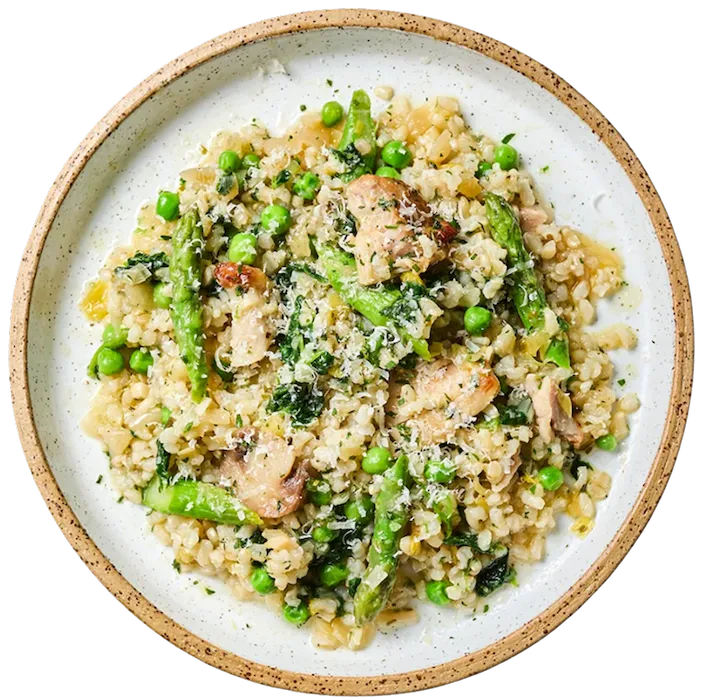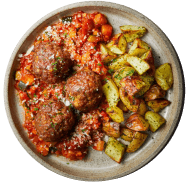Can An Anti-Inflammatory Diet Benefit Your Health?
What Are The Benefits Of An Anti-Inflammatory Diet?
There are a lot of misconceptions around anti-inflammatory diets and "inflammation" in a general sense. In this article, we look at what science has to say about the health impacts of inflammation in the body and how an anti-inflammatory diet can benefit your health. learn what an anti-inflammatory diet is, alongside how to get started eating to reduce inflammation.
Claims about the anti-inflammatory power of foods are everywhere, but is the science around these claims credible? Field Doctor’s Registered Dietitian Laura Tilt wades through the noise.
What exactly is inflammation?
Have you ever paid attention to what happens when you cut your finger? If you have, you’ve might have noticed redness, swelling and heat surrounding the cut. These are all signs of inflammation - your body’s way of responding to injury or infection.
When inflammation happens, blood vessels widen to increase blood flow. This allows many immune cells to rush to the injured area. The job of these immune cells is to clear the infection or harmful factor and heal the damaged tissues.
Understanding the different types of inflammation
It’s helpful to understand that there are two distinct types of inflammation: acute and chronic. Acute (or short-lived) inflammation happens within seconds or minutes of an injury. It usually resolves within a few days as healing takes place.
A cut on your hand, a sprained ankle, a cold or viral infection all involve acute inflammation. There are five symptoms of acute inflammation, which signal that your immune system is responding to injury or infection:
- Redness
- Heat
- Swelling
- Pain
- Loss of function
Chronic (ongoing) inflammation is a gradual process that persists for months or years. There are fewer noticeable signs of chronic inflammation, and the cause isn’t always clear. Possible triggers include:
- Acute inflammation that hasn’t settled
- The immune system attacking healthy tissues by mistake
- Lifestyle factors like environmental toxins, cigarette smoke and an unhealthy diet
Why should we care about inflammation?
Inflammation has a bad reputation, but it is helpful to remember that it is a normal and natural immune response.
It becomes a problem when it persists at a low-level over long periods of time, because it can damage healthy tissues and organs. Over time, this can lead to long-term health conditions like heart disease, diabetes, arthritis and cancer.
So, what can we do to keep it under control?
Some lifestyle factors like a poor diet and smoking can fan the flames of chronic inflammation. But other factors like a healthy diet, regular exercise and quality sleep can protect against it.
Of all these protective factors, the spotlight has fallen on diet, maybe because food feels like something we can manage day-to-day. The term “anti-inflammatory diet” has become widespread, gracing everything from diet books to recipes. But what does scientific research tell us about the role nutrition can play?
Nutrition and inflammation
It’s true that many foods and nutrients can influence inflammation. For example, research has shown that nutrients in blueberries, ginger, turmeric and oily fish can dampen down inflammation.
The problem is these studies look at specific foods or nutrients in isolation. In real-life, we eat a combination of foods.
This means it’s not as simple as saying this food is ‘anti-inflammatory’ and this food is ‘pro-inflammatory’ because the impact of a food or nutrient can change according to the overall diet it sits within.
In Great Britain and the EU, there are no approved health claims that link any food or nutrient with the term 'anti-inflammatory'.
What is an anti-inflammatory diet?
Because of these challenges, researchers have shifted their focus towards studying dietary patterns.
These types of studies have shown that many healthy dietary patterns can protect against inflammation. For example, both a Mediterranean style diet (rich in fruits, vegetables, olive oil and wholegrain cereals) and the DASH diet (which limits saturated fats and salt intake) have been shown to lower inflammatory markers.
On the flipside, less healthy dietary patterns (low in fruits and vegetables and high in saturated fat, sugar salt) are linked with pro-inflammatory markers. According to data from surveys on UK adult eating habits, most of us are eating more saturated fat, sugar, and salt than is recommended.
Eating an anti-inflammatory diet
In summary, there’s no single food or nutrient that can regulate or reduce inflammation by itself. The best approach is to focus on your whole diet, including as many positive eating habits as possible. Here are some ideas to get you started:
Foods to focus on
- Aim for 5-8 servings of fruit and vegetables a day with a range of colours. For example, leafy greens, deep yellow and orange fruits and vegetables, tomatoes, apples and berries.
- Include 1-2 servings of oily fish each week
- When eating starchy carbohydrates like bread and pasta, choose wholegrains over refined grains
- Choose rapeseed oil or olive oil over butter
- Swap some of the meat in your diet for peas, lentils, and beans, or go 50:50 – for example a spaghetti bolognese made with 50% mince, 50% lentils
- Include nuts a few times a week as snacks or within your meals
Foods and drinks to eat less of
- Foods high in salt (more than 1.5 grams of salt per 100 grams of food)
- Processed meats like sausages, ham, bacon, salami, pate, and canned meat such as corned beef
- Foods high in added sugars like biscuits, chocolate and fizzy drinks
- Alcohol in large amounts
Should everyone follow an anti-inflammatory diet?
While anti-inflammatory diets are often recommended for people living with health conditions like diabetes, heart disease, or arthritis, the benefits extend to anyone who wants to protect their long-term health.
Bear in mind that diet can’t cure long term conditions, but it can improve health, help manage symptoms, and enhance quality of life.
Moving beyond diet
As important as diet is, it's just one piece of the puzzle. Exercising, managing stress, maintaining a healthy weight and practicing healthy sleep habits are also important steps that you can take to reduce the risk of chronic inflammation.
References
Furman, D., Campisi, J., Verdin, E., Carrera-Bastos, P., Targ, S., Franceschi, C., Ferrucci, L., Gilroy, D. W., Fasano, A., Miller, G. W., Miller, A. H., Mantovani, A., Weyand, C. M., Barzilai, N., Goronzy, J. J., Rando, T. A., Effros, R. B., Lucia, A., Kleinstreuer, N., & Slavich, G. M. (2019). Chronic inflammation in the etiology of disease across the life span. Nature Medicine, 25(12), 1822–1832. https://doi.org/10.1038/s41591-019-0675-0
Minihane, A. M., Vinoy, S., Russell, W. R., Baka, A., Roche, H. M., Tuohy, K. M., Teeling, J. L., Blaak, E. E., Fenech, M., Vauzour, D., McArdle, H. J., Kremer, B. H. A., Sterkman, L., Vafeiadou, K., Benedetti, M. M., Williams, C. M., & Calder, P. C. (2015). Low-grade inflammation, diet composition and health: Current research evidence and its translation. British Journal of Nutrition, 114(7), 999–1012. https://doi.org/10.1017/S0007114515002093
Estruch, R. (2010). Anti-inflammatory effects of the Mediterranean diet: The experience of the PREDIMED study. Proceedings of the Nutrition Society, 69(3), 333–340. https://doi.org/10.1017/S0029665110001539
Byrd, D. A., Judd, S. E., Flanders, W. D., Hartman, T. J., Fedirko, V., & Bostick, R. M. (2019). Development and Validation of Novel Dietary and Lifestyle Inflammation Scores. Journal of Nutrition, 149(12), 2206–2218. https://doi.org/10.1093/jn/nxz165
related content
more content: General Health
browse our ranges.
choose from one of our ranges or personalise your own menu from 60+ meals.
- low FODMAP

- eat well, live well programme

- gluten free

- high protein

- weight management

- ibs

- lowest calorie

- lower carbs

- mediterranean

- smaller range

- pcos

- lean + lighter

- menopause

- heart healthy

- plans

- full menu

- gift cards
- take the quiz